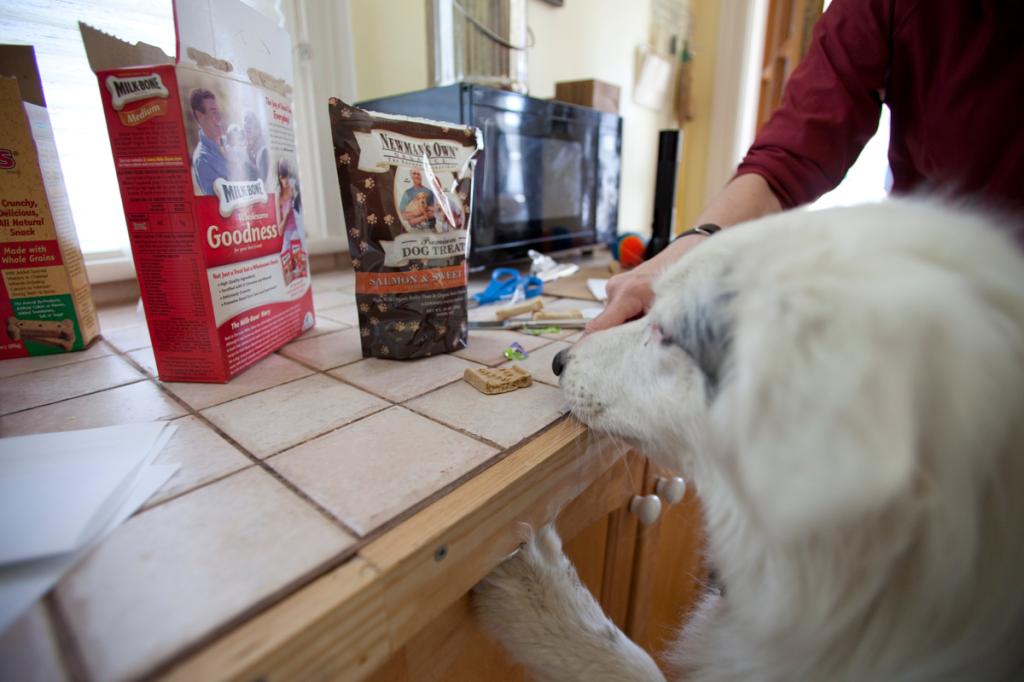“Never doubt that a small group of thoughtful people can change the world.”
— Margaret Mead
Because Americans are optimists we tend to see Mead’s observation as upbeat and life-affirming (as it was probably intended). Blinkered by optimism, however, we miss the dark flip side of her observation — that a few fanatics can do immense harm.
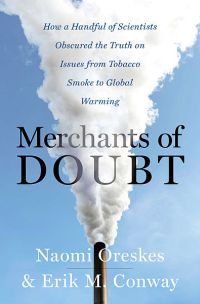 In their sweeping and comprehensive new book Merchants of Doubt: How a Handful of Scientists Obscured the Truth on Issues from Tobacco Smoke to Global Warming, historians Naomi Oreskes and Erick M. Conway document how a handful of right-wing ideologues — all scientists — have (mis)shaped U.S. policy for decades, delaying government action on life-and-death issues from cigarettes and second-hand smoke, to acid rain, and now, finally, to climate change. The book is similar to the popular Discovery Channel show “How Do They Do It?” Only instead of investigating quirky mysteries like how stripes get into toothpaste, Merchants of Doubt looks at exactly how we arrived at the gravest crisis in the history of our species — one we created ourselves.
In their sweeping and comprehensive new book Merchants of Doubt: How a Handful of Scientists Obscured the Truth on Issues from Tobacco Smoke to Global Warming, historians Naomi Oreskes and Erick M. Conway document how a handful of right-wing ideologues — all scientists — have (mis)shaped U.S. policy for decades, delaying government action on life-and-death issues from cigarettes and second-hand smoke, to acid rain, and now, finally, to climate change. The book is similar to the popular Discovery Channel show “How Do They Do It?” Only instead of investigating quirky mysteries like how stripes get into toothpaste, Merchants of Doubt looks at exactly how we arrived at the gravest crisis in the history of our species — one we created ourselves.
Although most of these scientists were influential men in themselves (and they are all men), they could not have done as much damage without powerful allies. Whole industries bankrolled their research, sometimes laundering the money through front groups with innocuous names. Think tanks like the George C. Marshall Institute were financed specifically to publish and disseminate their papers — junk science that couldn’t survive the rigors of peer-reviewed journals. Oreskes and Conway also devote an insightful section to the mass media’s mostly unwitting complicity in this scandal.
This premise may sound like a conspiracy theory, but the truth Oreskes and Conway elucidate is more banal and convincing. The title, Merchants of Doubt, frames the authors’ argument, echoing an internal memo from the Brown & Williamson tobacco company that declared: “Doubt is our product since it is the best means of competing with the ‘body of fact’ that exists in the mind of the general public.” Big tobacco helped finance the industry of doubt in its modern form, run by the scientists whose schemes this book details. In a sense, this is an industrial history and it should be no more shocking to see the same names continually popping up than it is to see Lee Iacocca’s in a history of the auto industry.
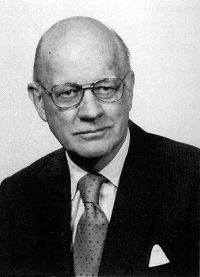 Fred SeitzThe central characters in Merchants of Doubt include Fred Seitz, S. Fred Singer, William Nierenberg, and Robert Jastrow. These may not exactly be household names, but it’s probably not much of a stretch to call them the founding fathers of industrial-strength doubt.
Fred SeitzThe central characters in Merchants of Doubt include Fred Seitz, S. Fred Singer, William Nierenberg, and Robert Jastrow. These may not exactly be household names, but it’s probably not much of a stretch to call them the founding fathers of industrial-strength doubt.
Fred Seitz was a pioneer of solid-state physics who helped develop the atom bomb. From the end of World War II until his death in 2008, Seitz devoted himself to protecting laissez-faire capitalism from communism. He moved quickly from scientific research to administrative work, serving as president of the National Academy of Sciences from 1962 to 1969. When the Soviet Union broke a moratorium on atmospheric testing of nuclear weapons, Seitz immediately urged President John Kennedy to respond in kind, despite evidence that radioactive fallout contaminated swaths of land for more than a thousand miles. Innocent people would die, but some collateral damage is inevitable when fighting a war, even a cold one.
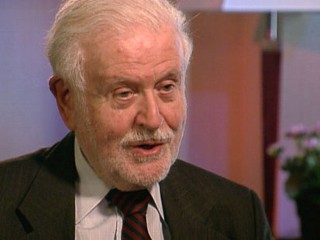 Fred SingerFred Singer is another physicist turned cold warrior. He began his career developing the government’s earth observation satellite system. Along the way, Singer took up the cudgel defending free enterprise by opposing environmental regulations. The other “merchants of doubt” profiled by Oreskes and Conway traveled a similar path. Physicist William Nierenberg’s work on the Manhattan Project led him in the early 1960s to become NATO’s chief scientist working on developing weapons to use against the Soviets. Astrophysicist Robert Jastrow moved from NASA into a leading position supporting Ronald Reagan’s Strategic Defense Initiative (SDI, aka, Star Wars) to counter “Soviet hegemony,” which he called the “greatest peril” in U.S. history.
Fred SingerFred Singer is another physicist turned cold warrior. He began his career developing the government’s earth observation satellite system. Along the way, Singer took up the cudgel defending free enterprise by opposing environmental regulations. The other “merchants of doubt” profiled by Oreskes and Conway traveled a similar path. Physicist William Nierenberg’s work on the Manhattan Project led him in the early 1960s to become NATO’s chief scientist working on developing weapons to use against the Soviets. Astrophysicist Robert Jastrow moved from NASA into a leading position supporting Ronald Reagan’s Strategic Defense Initiative (SDI, aka, Star Wars) to counter “Soviet hegemony,” which he called the “greatest peril” in U.S. history.
What all these men have in common (aside from their background in physics) is the belief that the Cold War didn’t end with the collapse of the Soviet Union. In their minds, and in the minds of their followers, “real Americans” are still battling socialism, only now the threat comes primarily from within. Grasping that bizarre and paranoid notion is central to understanding their motivations and methods.
In the 1950s, Big Tobacco had begun using scientists to sow doubt about links between their product and cancer. As the evidence against them mounted in the 1970s, the tobacco industry realized they needed something more. They found it in Seitz, who was not merely a scientist, but the former president of the Academy of Sciences.
 R. J. Reynolds put Seitz in charge of the company’s biomedical research grant program. The amount of money available was staggering. In 1981, Oreskes and Conway write, the American Cancer Society and the American Lung Association together contributed $300,000 to research. In that same year, Big Tobacco directed $6.3 million to researchers who consistently found no evidence conclusively linking tobacco to serious medical problems.
R. J. Reynolds put Seitz in charge of the company’s biomedical research grant program. The amount of money available was staggering. In 1981, Oreskes and Conway write, the American Cancer Society and the American Lung Association together contributed $300,000 to research. In that same year, Big Tobacco directed $6.3 million to researchers who consistently found no evidence conclusively linking tobacco to serious medical problems.
Seitz and the tobacco industry were a perfect fit. Environmental and industrial regulations were anathema to each. For the industry, it was a simple matter of self-interest. While Seitz was well-paid for his work, ideology may have been the more important factor. Over the years Seitz’s conservative views had grown ever more extreme. He found himself alienated from many of his scientific colleagues over the Vietnam War (many of them were against the war; Seitz was an enthusiastic supporter). He also became convinced that environmentalists were dupes of communist propaganda, if not outright traitors.
Eventually, Seitz’s right-wing views would become too much for even the tobacco industry. Seitz was, in their view, “not sufficiently rational” to maintain a public connection with the industry.
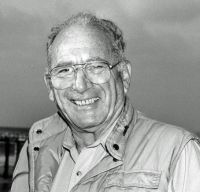 William NierenbergWhile Seitz was busy doling out “research” funds for R. J. Reynolds, his colleague, William Nierenberg, was leading the fight in a different arena: to prevent the federal government from taking action on acid rain. Once again, Oreskes and Conway do an excellent job of bringing to life a complex and important environmental battle that is poorly remembered today. In 1982, Nierenberg was appointed by President Ronald Reagan to lead a review of the scientific evidence concerning acid rain. Had the acidity of rain in the northeastern part of the United States really increased? If so, how serious was the problem? And what caused acid rain? Was it naturally occurring, or did humans play a role in creating the problem?
William NierenbergWhile Seitz was busy doling out “research” funds for R. J. Reynolds, his colleague, William Nierenberg, was leading the fight in a different arena: to prevent the federal government from taking action on acid rain. Once again, Oreskes and Conway do an excellent job of bringing to life a complex and important environmental battle that is poorly remembered today. In 1982, Nierenberg was appointed by President Ronald Reagan to lead a review of the scientific evidence concerning acid rain. Had the acidity of rain in the northeastern part of the United States really increased? If so, how serious was the problem? And what caused acid rain? Was it naturally occurring, or did humans play a role in creating the problem?
The questions were valid, or at least they had been when the phenomenon was first examined a decade earlier. A broad scientific consensus had emerged over several years, so that by 1979 it wasn’t news to most scientists in the field when Scientific American published an article explaining to the public that “In recent decades, the acidity of rain and snow has increased sharply over wide areas. The principle cause is the release of sulfur and nitrogen by the burning of fossil fuels” to generate electricity. What’s more, the National Academy of Sciences had released a report in 1981 with similar conclusions, but going even further. That study concluded that there was “clear evidence of serious hazard to human health and the biosphere” from acid rain, requiring immediate action.
The Nierenberg Panel produced a report at war with itself, marked by a key internal contradiction. For the most part, the executive summary agreed with the 1981 NAS study. But, write Oreskes and Conway, an appendix was added suggesting that “we really didn’t know enough to move forward with emissions controls.” The confusion bred by the report cast just enough doubt on what was actually known about acid rain to allow the Reagan administration to do exactly what it had wanted to do all along: nothing. The misleading appendix was written by Fred Singer. In the early 1980s, Singer was a senior fellow at the Heritage Foundation, arguably the most influential conservative think tank during the Reagan era. Created with an initial quarter-million dollar grant from beer magnate and right-wing Republican activist Joseph Coors, the group was initially led by Paul Weyrich, who combined absolute allegiance to the Free Market, ultra-nationalism, and fundamentalist evangelical Christianity of the narrowest kind. (Along with Jerry Falwell, Weyrich founded the group Moral Majority.)
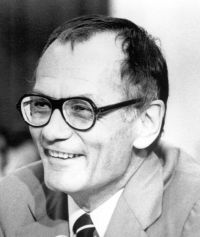 Robert JastrowNineteen eighty-four marked a key moment in Oreske and Conway’s darkly fascinating history of selling doubt. The issue at the center of events at the time had no obvious relation to climate change. The controversy involved missiles, specifically, Ronald Reagan’s $60 billion program to build an impenetrable “missile shield” over the United States. Most scientists regarded SDI as technologically impossible and almost certainly destabilizing. Over a thousand experts signed a petition stating that they would refuse any government funding of projects that could further SDI. The move enraged Seitz and his colleagues Nierenberg and Robert Jastrow. In reaction, the three hawks formed the George C. Marshall Institute, a conservative think tank dedicated to selling Star Wars to policy makers and the public. For Seitz and his colleagues, GMI represented a decisive step away from the scientific community — and from science itself. With the fate of the country hanging in the balance, an ideology devoted to the red, white, and blue came before science, which prided itself on being colorless and colorblind.
Robert JastrowNineteen eighty-four marked a key moment in Oreske and Conway’s darkly fascinating history of selling doubt. The issue at the center of events at the time had no obvious relation to climate change. The controversy involved missiles, specifically, Ronald Reagan’s $60 billion program to build an impenetrable “missile shield” over the United States. Most scientists regarded SDI as technologically impossible and almost certainly destabilizing. Over a thousand experts signed a petition stating that they would refuse any government funding of projects that could further SDI. The move enraged Seitz and his colleagues Nierenberg and Robert Jastrow. In reaction, the three hawks formed the George C. Marshall Institute, a conservative think tank dedicated to selling Star Wars to policy makers and the public. For Seitz and his colleagues, GMI represented a decisive step away from the scientific community — and from science itself. With the fate of the country hanging in the balance, an ideology devoted to the red, white, and blue came before science, which prided itself on being colorless and colorblind.
As the unworkable SDI inevitably faded, GMI turned to other ideological battles, including ozone depletion and global warming. Their adversaries saw these as scientific issues, not clashes of ideology, which gave GMI an advantage. Science recognizes the inevitability of uncertainty. The point isn’t to go for perfection but to continually refine models of how complex phenomena work. Science uses doubt as a tool, a prod to deepen understanding. Seitz and his associates used doubt as a weapon against science. They seized on inevitable uncertainties in scientific models as evidence that the models had no value, or worse. In 1987, for example, Singer, then working at the Department of Transportation, wrote an article published in The Wall Street Journal that was rife with inaccuracies and distortions minimizing the importance of the discovery of a hole in the ozone layer, a portion of the lower stratosphere that blocks most harmful ultraviolet rays from reaching the surface of the earth.
“It was the beginning of a counternarrative,” write Oreskes and Conway, “that scientists had overreacted before, were overreacting now, and therefore couldn’t be trusted.”
That same counternarrative of denial continues today, stronger and more strident than ever, and now focused on creating doubt about all aspects of climate change. The ultimate goal hasn’t changed since the tobacco days — preventing government regulation of industry. In a 2007 article, Newsweek called the George C. Marshall Institute “a central cog in the denial machine.” GMI has received millions of dollars from conservative foundations and corporations. Exactly how much isn’t known because in 2001, tired of facing criticism over the fact that one of the largest corporate donors to its anti-global warming work was oil giant ExxonMobil, GMI made its donor list secret.
The denial machine contains a huge number of cogs, and it would take an encyclopedia to list them all. The authors do an excellent job, however, of touching on many of the cogs inside that dreadful box, from clueless writers (Bjorn Lomborg, John Tierney, George Will) to odious politicians (Sen. James Inhofe, Vice President Dick Cheney) to the scores of conservative foundations that wrap themselves in the flag that they disgrace by their actions.
Merchants of Doubt is an important book. How important? If you read just one book on climate change this year, read Merchants of Doubt. And if you have time to read two, reread Merchants of Doubt.
